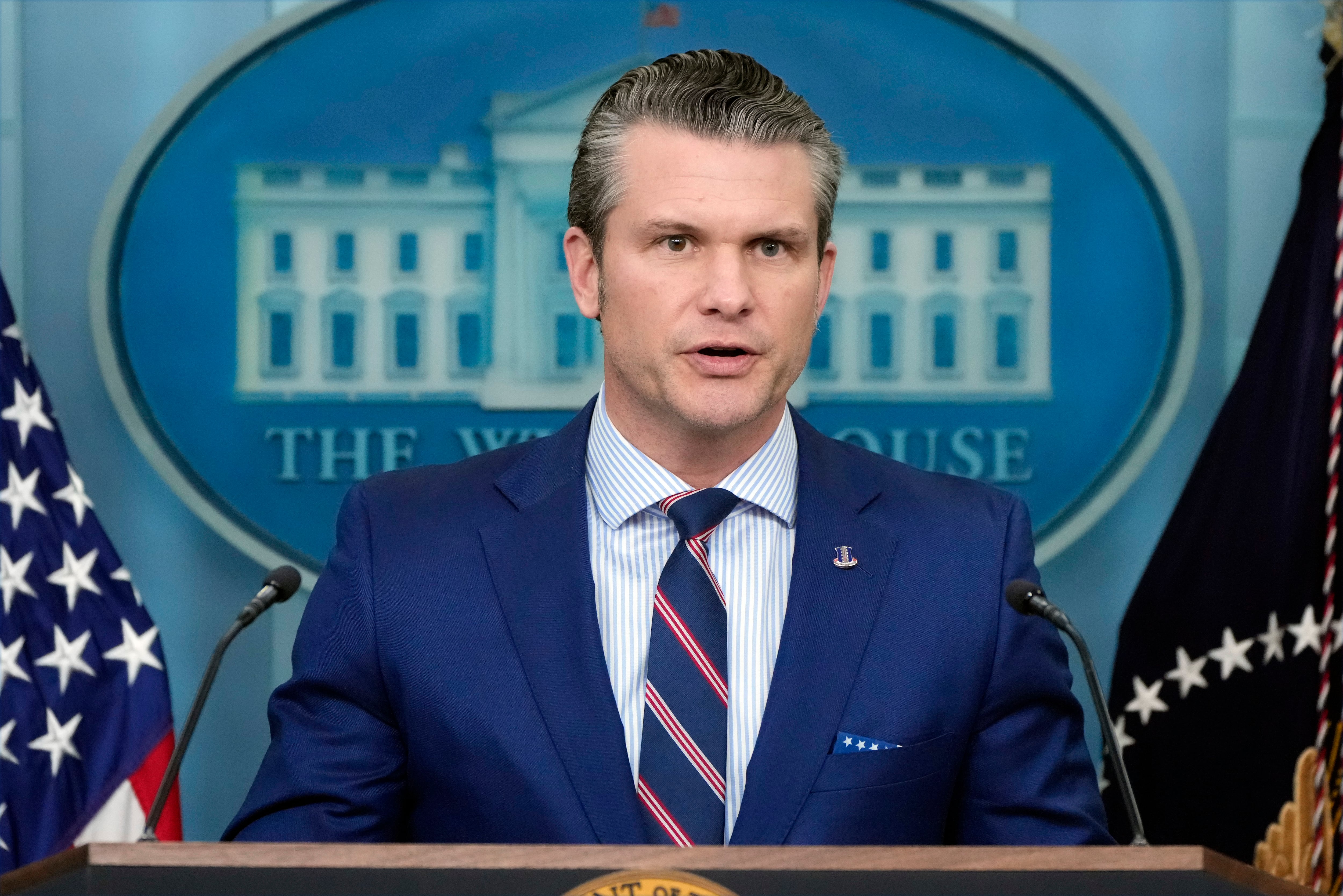
In a growing political storm shaking the foundations of the Pentagon, Democratic Congressman Seth Moulton has taken a hard public stand against what he calls a dangerously political and authoritarian revamp of U.S. military leadership under Secretary of Defense Pete Hegseth.
Moulton, a former Marine who served in Iraq and sits on the House Armed Services Committee, has voiced deep concerns over Hegseth's recent mass firings of top-ranking generals and admirals, accusing the Secretary of Defense of steering the American military toward a path disturbingly similar to the military hierarchies of autocratic states like Russia, China, and North Korea.
Moulton’s alarm bells come in response to Hegseth’s controversial move to cut 20 percent of all four-star generals and admirals and 10 percent of all other flag officers in the U.S. armed forces.
While Hegseth has framed the move as a necessary step to reduce bureaucratic bloat and promote innovation, Moulton argues that the true motivation is deeply political.
The manner in which these cuts have been executed — and the demographic pattern of those removed — has drawn widespread scrutiny and sparked fears that the highest echelons of American military leadership are being purged not for inefficiency but for political disobedience and identity.
The military, Moulton asserts, has indeed grown top-heavy over the decades. Between 1965 and 2023, while the total size of the armed forces dropped nearly in half, the number of high-ranking officers surged.
Four-star positions ballooned by over 100 percent, and three-star roles by nearly 130 percent. This, Moulton says, justifies a re-evaluation. But he stresses that such structural changes must be guided by a clearly defined strategy, not arbitrary quotas.
What alarms him is the absence of transparency and accountability in Hegseth’s approach. Hegseth has failed to provide justifications for specific firings, despite repeated bipartisan inquiries from Congress.

Among those dismissed are several historic figures, including Admiral Lisa Franchetti, the first female Chief of Naval Operations, and the first woman to lead the Coast Guard.
These dismissals have hit a nerve because they involve some of the very few women and people of color who have broken into the Pentagon’s highest ranks.
The military currently has only a small fraction of women among its general and flag officers. Of the 10 women who have ever reached the rank of four-star general or admiral, two have now been ousted under the current administration.
Likewise, General C.Q. Brown, one of the most respected and experienced officers in the Pentagon and the first Black Chairman of the Joint Chiefs of Staff, was abruptly fired — a move that Moulton calls nothing short of racist.
Moulton has described these decisions as not only damaging to morale but also destructive to the foundational principles of the U.S. military. He believes that service members across all ranks are now forced to wonder whether their careers depend more on political allegiance than on merit or performance.
This climate, he warns, is antithetical to the American tradition of civilian control paired with an apolitical military. It undermines trust, readiness, and ultimately the effectiveness of the force.
When soldiers see their leaders removed without cause or explanation, they begin to fear not only for their careers but for the integrity of the institution they serve.
Adding further concern is the secrecy surrounding these personnel decisions. Moulton says Congress has made formal bipartisan requests for explanations, including letters co-signed by Republican Rep. Don Bacon, himself a retired Air Force general.

Yet Hegseth has reportedly refused to provide any clear answers. Even fired generals themselves remain in the dark about the reasons for their dismissal. This veil of opacity, Moulton argues, is not only disrespectful to the individuals involved but also deeply undemocratic.
Moulton draws a stark comparison between Hegseth’s leadership and the authoritarian style of military governance in autocratic regimes. In those systems, loyalty to the regime trumps competence, and dissent is punished without due process.
This is precisely what Moulton believes is now unfolding in the United States under Hegseth’s direction. The military’s strength, he insists, lies in its diversity, intellectual openness, and internal accountability — values he sees eroding under the current regime.
Hegseth has stated that the firings are part of a larger plan to streamline military leadership, citing World War II-era ratios of generals to enlisted personnel as a benchmark.
While Moulton agrees that the modern military may have become bloated at the top, he rejects the idea of random percentage-based cuts as a substitute for strategy.
He points out that the threats and operational environments of today are far more complex and global than they were in the mid-20th century. From cyber warfare to great-power competition and the evolving importance of space, today’s military must be structured for agility, not ideology.
Among the more puzzling aspects of Hegseth’s reforms are his plans to merge certain military commands, such as the Army Futures Command and the Training and Doctrine Command.
Each is currently led by a four-star general. If one position is eliminated, the natural question is who will be fired — a decision that, given recent patterns, Moulton fears will fall along racial lines.
He expresses doubt that Hegseth is capable of explaining or justifying such a move on strategic grounds. If the combination makes sense, he argues, Hegseth should be willing and able to articulate that rationale to Congress and the public.
But so far, no such reasoning has been forthcoming. The deeper issue, Moulton warns, is not just the personnel changes themselves, but the atmosphere of fear and confusion they create.
Every senior officer now has reason to wonder whether they will be next — and not because of poor performance, but because of their race, gender, or political leanings.
This instability seeps downward, corroding the culture of accountability and professionalism that the U.S. military has long prided itself on.
In addition to leadership changes, Moulton criticizes Hegseth’s broader strategic vision — or lack thereof. While the administration is seeking a significant increase in the military budget, Moulton argues that the money is being directed toward the wrong priorities.
He points to underinvestment in space, cyber capabilities, and partnerships with the private tech sector. He is particularly critical of the decision to remove the head of Cyber Command, calling it a step backward at a time when cyber threats from adversaries like China and Russia are growing more sophisticated.
To Moulton, what is unfolding is not just a debate over military efficiency, but a power struggle over the soul of the U.S. armed forces. He fears that Hegseth is transforming the Pentagon into a tool for ideological enforcement rather than national defense.
This could have dire consequences for civil-military relations and for democracy itself. When political loyalty becomes a criterion for military promotion or retention, the line between military and party becomes dangerously blurred.
This threat is compounded by former President Donald Trump’s rhetoric and history. Moulton recalls Trump’s previous attempt to deploy the military against protesters during his first term — an order that was refused by the then-Secretary of Defense.
He now worries that under Hegseth, such an order would not be refused. In his view, Trump and Hegseth are preparing the military for future domestic use in partisan political battles, rather than positioning it to defend the country from external threats.
From the public’s perspective, Moulton says, there is no way to know whether a general was fired for inefficiency or for political reasons. The only way to dispel such suspicions would be for Hegseth to provide honest, detailed explanations — something he has consistently refused to do.
Every other Secretary of Defense, Moulton notes, has responded to congressional oversight. Hegseth’s silence represents not only a break with tradition but a direct challenge to the principle of civilian accountability.
The stakes, Moulton argues, could not be higher. If the military becomes viewed as a partisan institution, both public trust and internal cohesion will suffer.
Enlisted soldiers will no longer know whether their leaders rose through the ranks by merit or by allegiance. Officers will fear that their decisions — even in combat — could be second-guessed on ideological grounds.
And the American people will begin to lose faith in one of the country’s most respected and vital institutions.
In closing, Moulton calls on Americans — civilian and military alike — to resist the politicization of the armed forces. He warns that the integrity of the military must be preserved not just for strategic reasons, but as a safeguard of democracy itself.
The strength of the U.S. military has always derived from its professionalism, its meritocracy, and its commitment to the Constitution. Those values, he says, are now under threat — not from a foreign adversary, but from within.


-1745744877-q80.webp)


